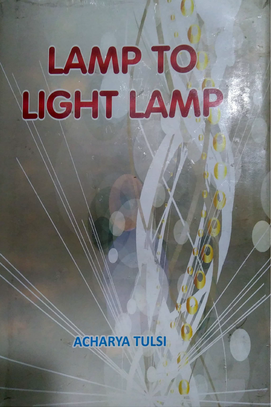Every individual has his own character. Like an individual, every society or every nation has its own character. The trouble in these times is that the individual is not vigilant about his character. The first thing before vigilance is faith. How would a person be ever vigilant about something in which he has no faith? There was a time when an individual considered his character of supreme importance. Raising an accusing finger at anyone's character was considered by him more painful even than death. That is why; on no account did an individual allow the clean image of his character to be blurred. Today the situation is quite the contrary. In the present age, the criterion of the loftiness of an individual is not his character, but his financial stature and his power and authority. With a view to come to the position of power, money is being accumulated and dispensed in an illegitimate manner. If a person like T.N. Seshan talks in terms of discipline, character or honesty, mass demonstrations are being planned against him. Is this the national character of India?
Anuvrat is the movement for character building. It is concerned about the character of the individual, the society and the nation. It is convinced that the character of the society is made by the character of the individual and the character of the society becomes the basis of the character of the nation. What would the identity of the nation be without the individual and the society? From this point of view, the national character is not expected to be defined in isolation. But the changed self centeredness of the individual is not allowing him to be part of the group. In such a situation, the national character cannot be based on it. Anuvrat has its own view and programme. The main aim of the anuvrat yatra (tour) is to make the national character dynamic. There are many things that blur the national character. Out of these, five main things have been kept in mind and the programme of the anuvrat yatra has been chalked out.
The main problem of our national character is the mentality of creating dissensions among men. Economic imbalance, casteism, communalism, mentality of racial discrimination etc. are the factors that widen the chasm between man and man. On the one hand, there are multi-storeyed palatial mansions and on the other hand, there are slums. On the one hand, there is the luxury reaching its summit and on the other hand there is utter penury. How would this distance be eliminated? Casteism is like the cobra with the raised hood. Religion has boon confined within the prison of sectarianism. There is the growing feeling of mutual hatred and contempt. Communal passion is not less dangerous than a bomb explosion. The apartheid policy had compelled Nelson Mandela to be in prison for twenty-seven years before he became the President. What does it all mean? Can any of these be considered important from the point of view of human values? Irrespective of whether there is any agreement in theory about giving them importance, how many persons are there, who would try to loosen their ever tightening grip?
Anuvrat believes in fraternisation. It does not divide men on national, provincial, linguistic, caste, racial, sexual considerations. It talks in terms of unity in diversity. It says that if man regards all others as his brothers, then he cannot harm anyone from his side. Leave aside he himself harming others, he would not even see anyone facing hardship. He would not kill anyone. He would not consider anyone high or low on the basis of caste. He would not consider anyone an untouchable. He would not spread the poison of communalism.
Anuvrat stands on the foundation of fraternisation. It advises human beings in the world to live with the feeling of brotherhood and communal harmony. If only those walls would tumble down and the chasms are bridged! If only ambitions stop growing and men like brothers embrace each other and teach the lesson of fraternisation
 Acharya Tulsi
Acharya Tulsi
